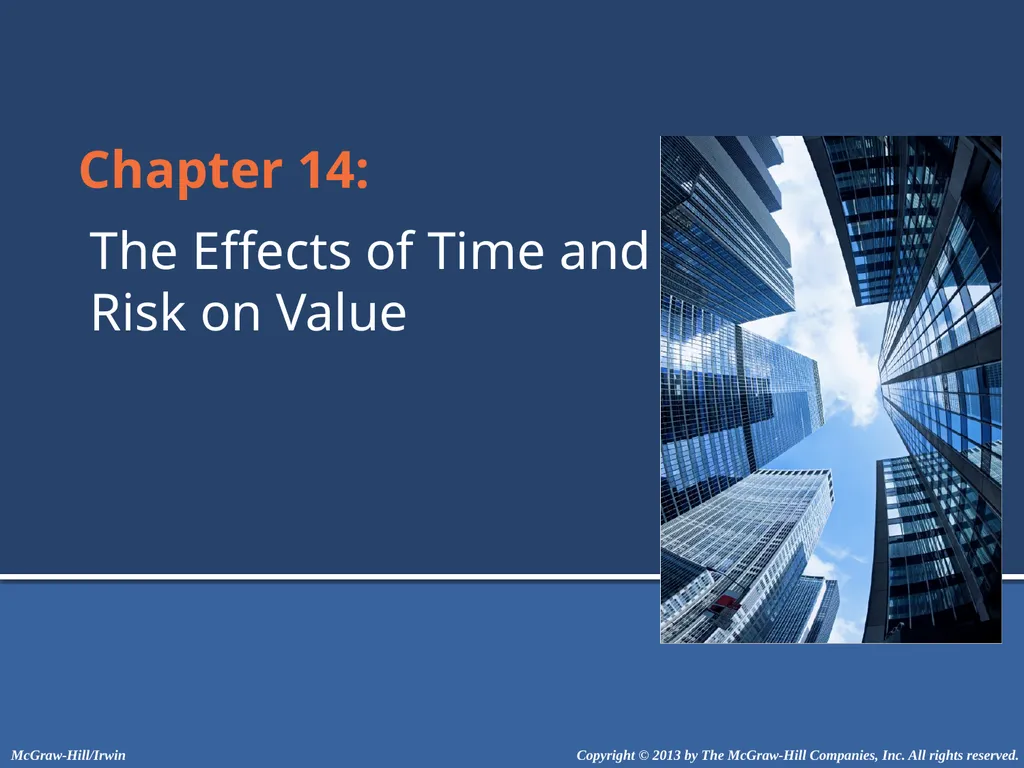
Author : aaron | Published Date : 2025-05-14
Description: Chapter 14: The Effects of Time and Risk on Value Copyright 2013 by The McGraw-Hill Companies, Inc. All rights reserved. McGraw-HillIrwin Value: The Central Idea Investment Value: Maximum price an investor is willing to pay for ownershipDownload Presentation The PPT/PDF document "" is the property of its rightful owner. Permission is granted to download and print the materials on this website for personal, non-commercial use only, and to display it on your personal computer provided you do not modify the materials and that you retain all copyright notices contained in the materials. By downloading content from our website, you accept the terms of this agreement.
Here is the link to download the presentation.
"Chapter 14: The Effects of Time and Risk on Value"The content belongs to its owner. You may download and print it for personal use, without modification, and keep all copyright notices. By downloading, you agree to these terms.













